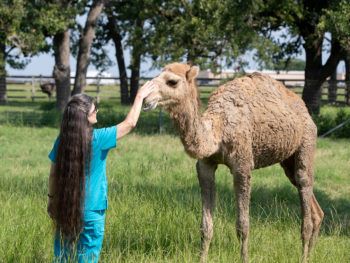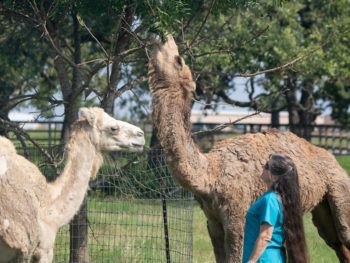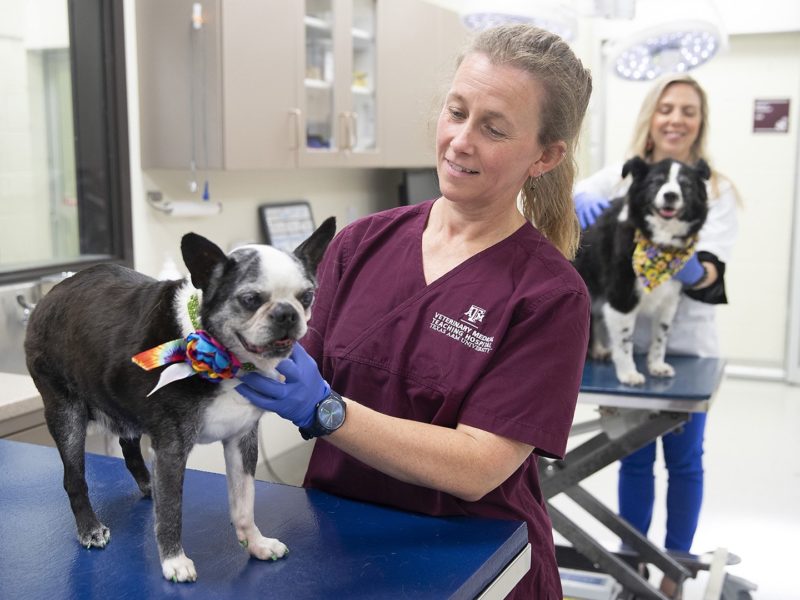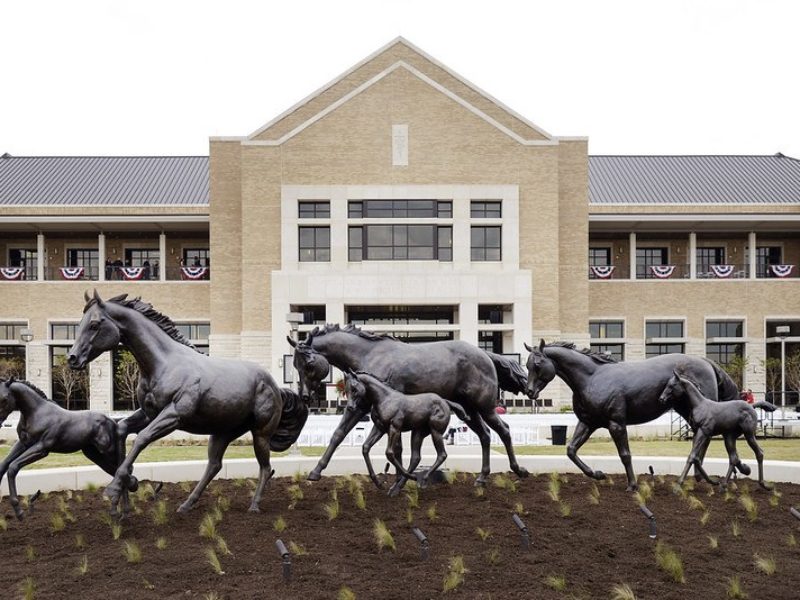Two Camels Donated To Texas A&M Wildlife Center

Crimson and Casper, two dromedary camels, are the latest exotic animals to call the Winnie Carter Wildlife Center home.
The one-hump camels were donated to the wildlife center, which is part of the Texas A&M University College of Veterinary Medicine & Biomedical Sciences’ (CVMBS), after Crimson was diagnosed with fibrous osteodystrophy, a chronic condition that will require a special diet and routine medical care for the rest of her life.
“Unfortunately, this condition is something we see pretty commonly in domestic camels in the United States,” said Dr. Evelyn MacKay, a CVMBS clinical assistant professor and Crimson’s primary veterinarian at the Texas A&M Large Animal Teaching Hospital.
Fibrous osteodystrophy is a bone disease caused by deficiencies in calcium and vitamin D and an excess of phosphorus, which leads the affected animal’s body to reabsorb calcium from bones. The calcified bone is then replaced by fibrous connective tissue, or bundles of collagen fibers found in tendons and ligaments, which causes swelling and pain.
“When Crimson came in, both her mandible (lower jaw) and her maxilla (upper jaw) were swollen,” MacKay said. “We started with X-rays and, as we expected, the bone was less dense than it should be.”

Parasites in Crimson’s gastrointestinal tract may have also played a role in the development of the condition because they can prevent the body from absorbing nutrients appropriately, which may exacerbate some of the deficiencies in this disease.
“Crimson is an adolescent, so this is the time when her bones are supposed to be growing,” MacKay said. “She’s a little bit more vulnerable than a mature camel would be in terms of getting a disease like this because her overall nutritional requirements are higher.”
After being given anti-inflammatory medicine to reduce her pain and de-wormer for gastrointestinal parasites, Crimson’s treatment was largely nutritional.
“The biggest thing for Crimson’s treatment was to change her diet to have a more appropriate calcium to phosphorous ratio, supplement vitamin D, and feed her more alfalfa hay, beet pulp, and other foods with a high calcium content,” MacKay said.
Because of Crimson’s special needs, her original owner, MariBeth Yarbrough, decided that the camel would have a better life at the wildlife center, surrounded by experienced veterinarians and only minutes away from the teaching hospital. Crimson, 3, wasn’t at the center long before her best friend Casper, 2, came to join her.
“It was a very much a surprise that within a week after we had gotten Crimson, MariBeth said she hated that Crimson was alone and she wanted to give us Casper, too,” said Dr. Alice Blue-McLendon, director of the Winnie Carter Wildlife Center. “She said she cried when Casper left, but she wanted Crimson to be happy.”
Crimson’s veterinarians believe she was diagnosed early enough that her new diet should minimize her current swelling and prevent any progression of the disease.
“We don’t think she is currently in any pain because she’s eating well and doing great in the pasture,” Blue-McLendon said. “She’s gained a lot of weight since she left the hospital, which is really good.”
Crimson and Casper will help introduce CVMBS veterinary and undergraduate students in the wildlife center’s hands-on experiential-learning program to camel care and medicine.
“This is an excellent learning opportunity for our students,” Blue-McLendon said. “These are the only camels on campus so the students can come see them and learn about fibrous osteodystrophy.”
Media contact: Jennifer Gauntt, 979-862-4216, jgauntt@cvm.tamu.edu





